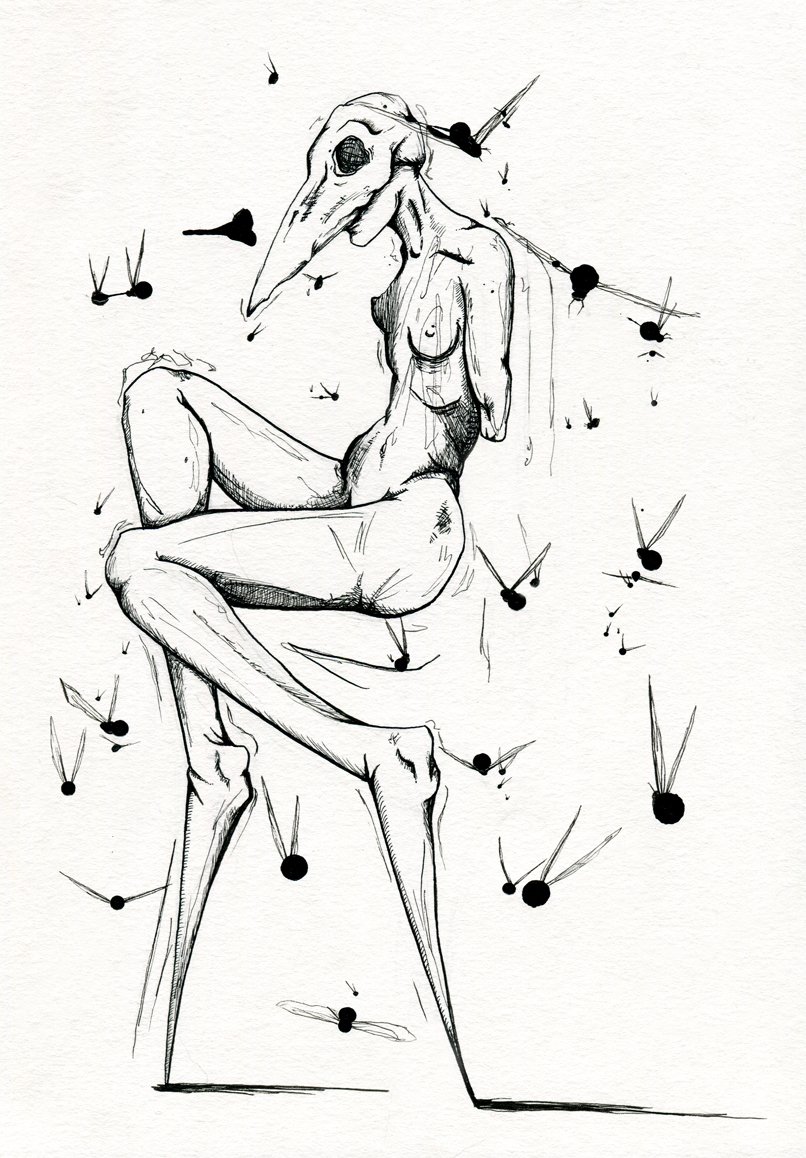Origin of Creation
I was recently asked to reflect upon my creative process and describe how it has evolved. When I first thought about this, I wasn’t sure how to even begin. I knew it wasn’t intuition, instinct, or raw talent that guided my art, that it was years of learning, practice and perfecting upon craft that lead me to this point. Aside from that, I had nothing. I wasn’t sure what my process was or how it happened. Over the following week I started being conscious of how new pieces came about and realized a few key factors, in no particular order, that have helped to shape my practice and eventually came to understand what my practice is and how I create art. This was a great exploration for me to become aware of how I work so that I may better understand myself and my art.
The first key factor that I realized had shaped my creating process started Freshman year of high school and has resonated in my artwork ever since. In freshman year I started to focus heavily on art and I started taking ballet classes. These don’t seem to be linked but these focuses influenced each other more than I had anticipated. The focus in ballet of aesthetic and creating strong lines with the body really changed the way I saw the human figure. Ballet caused me to focus on the weight, such as light or heavy postures, and movement of the body through a space. This study of ballet, and later dance as a broader subject, has lead me to how I approach the first step in my creative process. What I first look for in creating a new piece is a way to compose a form that has the ability to speak of deeper subjects and convey an idea through its body language, posture, weight, etc.
The second key factor was harder to recognize but was pretty obvious once I did. I have always, to my knowledge, been a perfectionist. Art created an outlet for this perfectionism. I could perfect and improve upon each piece of art. I would work the piece over and over as desired to get the line just the right thickness, the color just the right hue, the value just the right shade. If I felt that I “failed” at one project I could start on another and make it better than its predecessor. I was able to add the perfect amount of details and to work the piece to my satisfaction. This perfectionism has lead to a great attention to detail and love for a methodical creation process. This is probably why I am drawn to processes such as inking, printmaking, and painting.
The third key factor that I was able to come up with, an interesting point and unexpected point from my end, came from an interesting section in fourth grade at a “rebellious” phase with my beside-notes-doodling. This phase was an introduction to a trend that wouldn’t resurface until late high school. It was in fourth grade that I started experimenting with meshing forms together to create a new creature. I did these mainly to have “unique” art in fourth grade and to shock my mom (oh the thought process behind this one makes me chuckle). I believe that I achieved being “unique” but largely failed at shocking my mom. If I remember correctly, she was particularly fond of the duck with an ax for its head. When this resurfaced and was again explored in high school, my brothers (particularly my 5 year old brother at the time) started referring to my art as being “demented.” That was a high compliment at that time. This form of experimenting has branched out and evolved exponentially in recent years. Instead of working to try to be unique or to try to shock with my pieces, I’ve worked to create additions or reconstructions of the human body to get an idea across. These additions, as of late, tend to include trees protruding from the torso, bird beaks and skulls added to or placed over heads, additional joints and different limbs ending in points, etc.
The fourth key factor was a photography class in high school. This element allowed me to really explore lighting and composition in a way that drawing hadn’t previously allowed for. I could quickly take multiple photos with the same figure in the same pose but with different angles and compositions. I could then work with Photoshop to adjust lighting and contrast to get the feel that I was looking for. This class lead me to further exploring Photoshop that allowed me to better experiment with color and texture which trickled into my other pieces.
These key factors, as well as many other elements unaccounted for, have helped to piece together my creative process. My process, in a nutshell, is the following: I start creating a piece with an idea. I look for a form or look to piece together a form that has movement and a weight that will convey this idea. I am a big fan of the artistic concept of amor vacui, a love of empty spaces, so I work to compose these complex, detailed figures with a focus on creating a balanced negative space around them. Once I’ve established a composition and have sketched out the rough form, I add on copious amounts of details, careful to place them in the right areas to keep focal points where they should be. For this step I focus on line thickness to add weight or lack there of to specific parts of the body. I then add in lighting and contrast amounts that is appropriate for the theme and mood of the piece. This helps to fill out and give shape to the form and give additional information to the viewer about the mood and theme of the piece. It is last that I add in colors and determine a palate that will compliment the elements already utilized and will further strengthen the thought I’m trying to convey.


